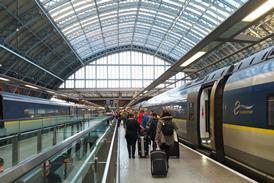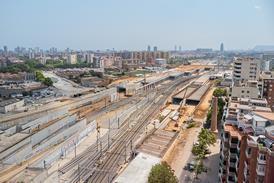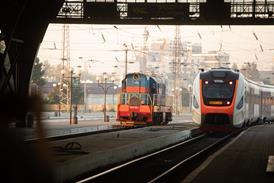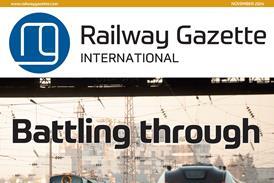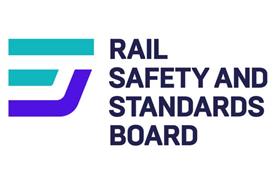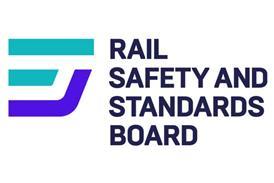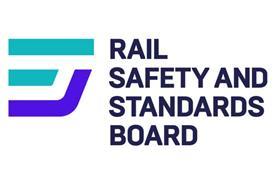INTRO: Technical innovation to upgrade equipment and operating practices is being combined with organisational restructuring to prepare Russian Railways for the challenges ahead
BYLINE: N E Aksyonenko
Minister of Railway TransportRussian Federation
RAIL IS THE BACKBONE of Russia’s transport system. It remains the most reliable and least expensive mode, meeting the country’s demand for the movement of freight and passengers. It is of the utmost social and economic importance in helping to stabilise and develop the national economy.
The railways of the Russian Federation handle almost 80% of freight movements and over 40% of passenger journeys. In 1998 RZD carried 834·3million tonnes of freight, recorded a total of 1019·5billion tonne-km and handled 1·5 billion long distance and commuter passenger journeys. Almost half of the 86700 route-km network is electrified, and electric traction now handles over 75% of all traffic.
The rail network is developing dynamically to serve Russia’s needs well into the next century. The Ministry of Railways is carrying out a range of scientific and technical programmes, aimed at upgrading both equipment and operating practices. Modern locomotives have been developed with on-board diagnostics, reliable safety devices, and automatic train handling systems, reducing energy consumption and offering other technical advantages. The latest coaches offer a high level of comfort and safety, and form the basis for developing high-speed services.
One of the ministry’s strategic objectives is to ensure competitiveness of freight operations by developing modern types of wagon and ensuring an adequate fleet to meet fully the requirements of customers. These include ensuring the security of freight consignments, easier cargo handling, developing maintenance-free wagon bodies and new generation bogies, including gauge-convertible wagons for east-west service. This equipment will be designed for production by domestic industry.
Structural reform
The dramatic collapse of manufacturing and production throughout the Federation over the last decade has had a severe impact on rail operations. There has been a substantial decline in traffic volumes and revenues, setting back investment and the supply of new equipment. The railways are under pressure to deliver a substantial cut in transport costs to help revitalise Russian industry. As this cannot be achieved without changing the management structure, the government approved the Concept of Structural Reforms of Federal Railway Transport.
This provides for staged restructuring to improve the management of the railways, in compliance with the Law on Federal Railway Transport under which all railway assets are considered to be federal property. The ultimate goals are to cut transport costs and to enhance the competitiveness of rail within the overall market.
The initial stage of the reform has been focused on bringing operating functions into line with the current demand. To adapt the business to the actual volume of traffic being handled, several hundred field units have been reorganised, merged or restructured over the last few years. Merging of units has seen a cut in administrative jobs, with less effect on personnel involved in operations. Changing the nature of operations undertaken by some field units made it possible to use their installations and equipment more efficiently, and to ensure jobs for surplus personnel. As a result, the total number of railway employees has been reduced by 300000.
Railway routes and field installations have been categorised by the volumes of traffic they handle, and different expenditure standards have been developed within the overall mandatory operational parameters.
Russian legislation charges the railways with providing socially-necessary passenger and freight services. For this reason loss-making lines are still maintained in operational condition. As these lines play an important role in the social and economic development of the regions they serve, RZD is negotiating for local authorities to subsidise the continuing operation of non-profitable passenger lines. At the same time, the losses incurred on low-density lines are being reduced through the introduction of less costly operating practices such as cutting the service period to a single shift.
Contracting out
To suit the current climate of reduced traffic volumes and changing demands, we are also looking to change the structure of the rolling stock maintenance and repair business. Based on economic analysis, the profile and managerial practices of the various units are being revised, and the number of railway workshops, subcontractors and support agencies is being reviewed.
Many of the railway-owned maintenance workshops are being restructured as joint stock companies to enable them to be privatised. This includes rolling stock and motive power repair shops, and factories producing spare parts and other items. However, those factories which have a monopoly in their particular market segment are being retained as an organic part of the railway to protect against exploitation.
To promote competition, equipment and services can also now be ordered from factories other than the traditional railway suppliers. This includes agricultural and non-railway equipment manufacturers and general construction companies. However, firms specialising in specific fields such as bridge and tunnel construction, signalling, communications and power supplies will continue to operate under the auspices of the Ministry of Railways.
Focus on freight
At present 80% of wagons in use are federal property. The reform concept provides for distributing a substantial proportion of the ministry’s fleet between several companies who will compete to supply them to the shippers. This is intended improve the quality of vehicles and maintenance, whilst reducing the cost of wagon hire for the end users.
Scientific, technical and economic studies into the consequences of such a policy suggest that it will worsen vehicle efficiency. Moreover, the drop in wagon utilisation will increase in line with the number of companies and the proportion of the fleet to be distributed. Empty wagon movements would increase, putting extra costs on the railway and its customers.
Infrastructure maintenance currently accounts for almost 90% of operating costs. The cost of wagon utilisation is forecast to range between 11 and 18% of the total transport cost. This suggests that setting up competing wagon hire companies is not economically justified. It would be preferable to allocate rolling stock to specific companies operating on a closed cycle using looped routes.
Another major issue is the modernisation or renewal of wagons which have reached the end of their economic life or are technically obsolete. During the last couple of years those companies who have their own wagon fleets have cut back their new orders significantly.
The guidelines for reforming freight operations envisage the introduction of modern information technology to improve real-time production management and traffic control. This will improve the quality and accuracy of documentation, labour productivity, and working conditions for managerial staff. Automated record-keeping and real-time data analysis will bring a fundamental improvement in the provision of information to customers about estimated delivery times.
Other benefits envisaged include a substantial enhancement in the monitoring of resource locations and ensuring rational utilisation. Management decision making will be accelerated to suit the rapidly-changing market conditions, including the possible creation of a new freight management structure. We also hope to reduce the amount of paper needed to control railway operations.
Regional structures
Another key factor behind the reform was the need to modernise the management of the various business units in the regional railway administrations. Within the unified framework for the reforms, each individual railway has been able to develop goals to suit their own situations.
On the Gorky Railway, for instance, the top priority was seen as changing the nature of property ownership and the legal status of the field units. The October Railway is gradually changing its regional management and strengthening local divisions to decentralise decision-making. In contrast, the East Siberia Railway opted for a more centralised structure suitable for a long-distance business with little local traffic, and eliminated its divisional structure.
Centralisation at ESR was made possible by the introduction of information technology to improve the flow of data and management information between the field units and headquarters. Financial, economic, statistical, technical and operational control staff from the divisions have moved to the headquarters, where the railway’s executive officers can also use the improved data coming from the operating units.
Traffic control has also changed on ESR. All train operations in the region are now managed from a single control centre in Irkutsk. Elimination of internal boundaries between the former divisions has helped to improve the throughput of traffic, cut out the cost of changing crews and handing over trains at those boundaries, with a corresponding increase in average train speeds. Related changes to the handling of freight trains include carrying out technical and commercial checks at logical traffic centres instead of artificial boundary points.
The Transport Service Centre at Irkutsk is now the only office placing orders for traffic movements on ESR. It acts as a single point of contact for customers doing business with the railway, dealing with all issues related to freight movement, billing the shippers, and monitoring cash flows in both roubles and hard currency.
As each regional railway is free to implement the reforms in the way it feels best, most are planning to retain some form of divisional structure for the time being. Divisions are seen as the most important unit in the overall control of transport operations. Nevertheless, there is scope for mergers or the elimination of some divisions through increased automation of operational control and the setting up of traffic control centres within the regional headquarters. Eliminating or reducing the flow of paper will speed up the transport process, improve rolling stock utilisation, and save jobs in operations management, all of which will help cut operating expenditures.
Passenger services
In the passenger business, the reform concept provides for the creation of separate companies to operate long-distance and commuter services. This is intended to cut costs, increase efficiency and improve the quality of service delivered to the passenger.
Long-Distance Passenger Companies are being established with the legal status of a State Unitary Enterprise. These companies will receive coaches, associated maintenance facilities and stations serving mainly long-distance passengers.
The income of these companies will depend on the specific economic conditions prevailing on the national railway as the reform programme progresses. Initially supported by revenue from freight operations, the Long-Distance Passenger Companies may be established as separate units within the regional railways when this cross-subsidy ends.
Commuter Passenger Companies will get rolling stock (mainly EMUs) and maintenance facilities, plus routes and stations used only by suburban services. Technical and operational features of commuter services in each region will be taken into account when forming these companies.
In some cases, traffic levels are not high enough to make the creation of a Commuter Passenger Service Company a viable proposition. Long-Distance Passenger Companies may instead take on this responsibility, under contract to the local federal administration or railway.
During a transitional period, the Commuter Passenger Service Companies will be established as separate companies within the regional railways. At a later date, ownership may be transferred to local authorities.
Financial relationships
The reform programme provides for the creation of a comprehensive financial structure, taking into account the nature of the federal railway and its diverse activities. Existing financial controls have to be improved and unified, with record-keeping, reporting, financial accounting and economic analysis to be automated across the regions.
Clear and open accounting procedures are required to ensure that payments are minimised and made promptly, and should also help to provide a stable financial system.
Throughout the reform process, the need to reduce the cost of transport for domestic industry will remain a key consideration. The new financial structure must therefore take into account the wider economic climate and the relationships between parties involved in the transport process.
Increasing competition from other modes in the domestic and international markets has to be taken into account when setting tariffs. There is severe competition from road for movements of containers, refrigerated consignments and imported goods, and significant volumes of oil products move along inland waterways parallel to railway lines. Competition for international traffic is influenced by the world market prices for the commodities being moved.
Under federal law, rail transport is presently classified as a natural monopoly. This limits the extent to which the railways can pursue an independent pricing policy, improve service quality and lower costs.
The reform programme should allow railways to adopt a more flexible tariff structure based on market demand, and to move gradually towards offering each customer an individual rate. Under this liberalised pricing policy, tariffs will be increasingly determined by contract.
By pursuing this programme of structural reform, we aim to keep rail as the backbone of Russian transport into the next century and beyond. It is our intention that the railways will be able to meet fully the growing demand for transport services.
TABLE: Table I. Russian Railways in profile (as at Jan 1 1999)
Route length km 86700 Diesel locos 1286
Electrified at 3 kV DC km 18200 Freight wagons 385100
Electrified at 25 kV AC km 21200 Passenger coaches 20574
Electric locos 2594
TABLE: Table II. Key performance indicators, roubles m
1997 1998
Total income 92632 97126
Freight income 80736 84503
Passenger income 11896 12624
Total operating costs 84840 78637
Freight operating costs 59940 55461
Passenger operating costs 24900 23196
Total profit 8617 19308
Profit from freight operations 20799 29049
Profit (loss) from passenger operations 12181 (9741)
Actual cost of traffic, kopeck/10 tonne-km 66·77 67·1
Average number of operating employees, million 1·085 1·073
CAPTION: This new bridge to carry the East Siberian Railway across the Amur river near Khabarovsk was commissioned in November 1998
CAPTION: A key hub for container operations on the Trans-Siberian landbridge corridor is the terminal at the Pacific port of Vostochni
CAPTION: Delegates to the International Heavy Haul Association’s Specialist Technical Session being held in Moscow on June 14 - 17 will have the opportunity to visit the Shcherbinka test track operated by the All Russian Railway Research Institute.
For more details of the event e-mail:
mnts@rricc.tsi.ru
CAPTION: The Demikhovo rolling stock factory is currently producing Type ED4M EMUs for commuter operations on 3 kV DC electrified lines

